Abstract
Alpha toxin production and its relationship to cell growth were studied in the Wood 46 strain of Staphylococcus aureus. Toxin first appeared in the culture in the late logarithmic stage, but at least 80% was produced during the subsequent period of slower cell growth. The toxin concentration per unit of cell mass or viable count increased continually throughout the period of toxin production and and at its maximum represented 1.6 to 2.0% of the dry weight of the cells. The possibility that alpha toxin is released as a result of cell lysis was examined by using the appearance of cellular deoxyribonucleic acid in the medium as an indicator of lysis. The results showed that no appreciable amount of lysis occurred during toxin production; at a time when almost maximum amounts of toxin were present in the culture, less than% 4 of the cells had lysed. This finding, together with the observation that less than 0.25% of the total amount of toxin in the culture could be found intracellularly, indicates that alpha toxin is released from intact cells shortly after it is synthesized.
Full text
PDF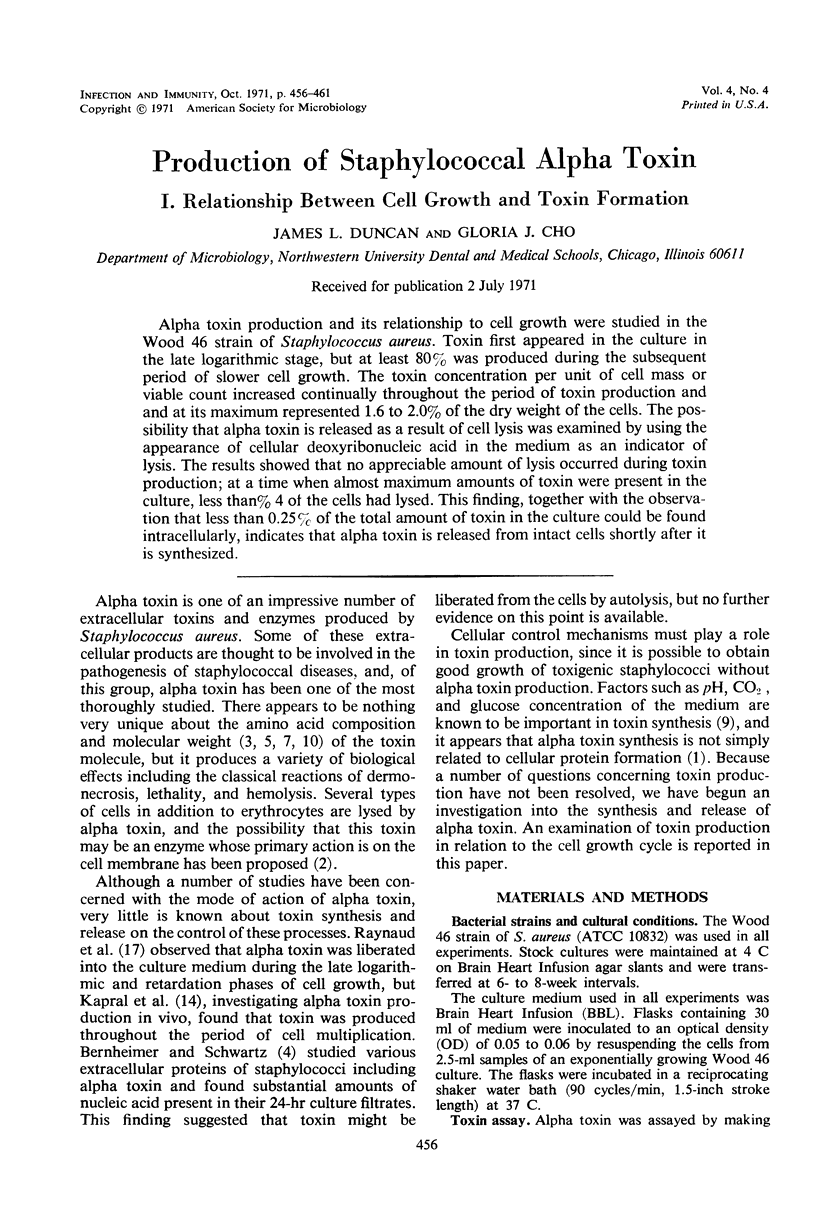
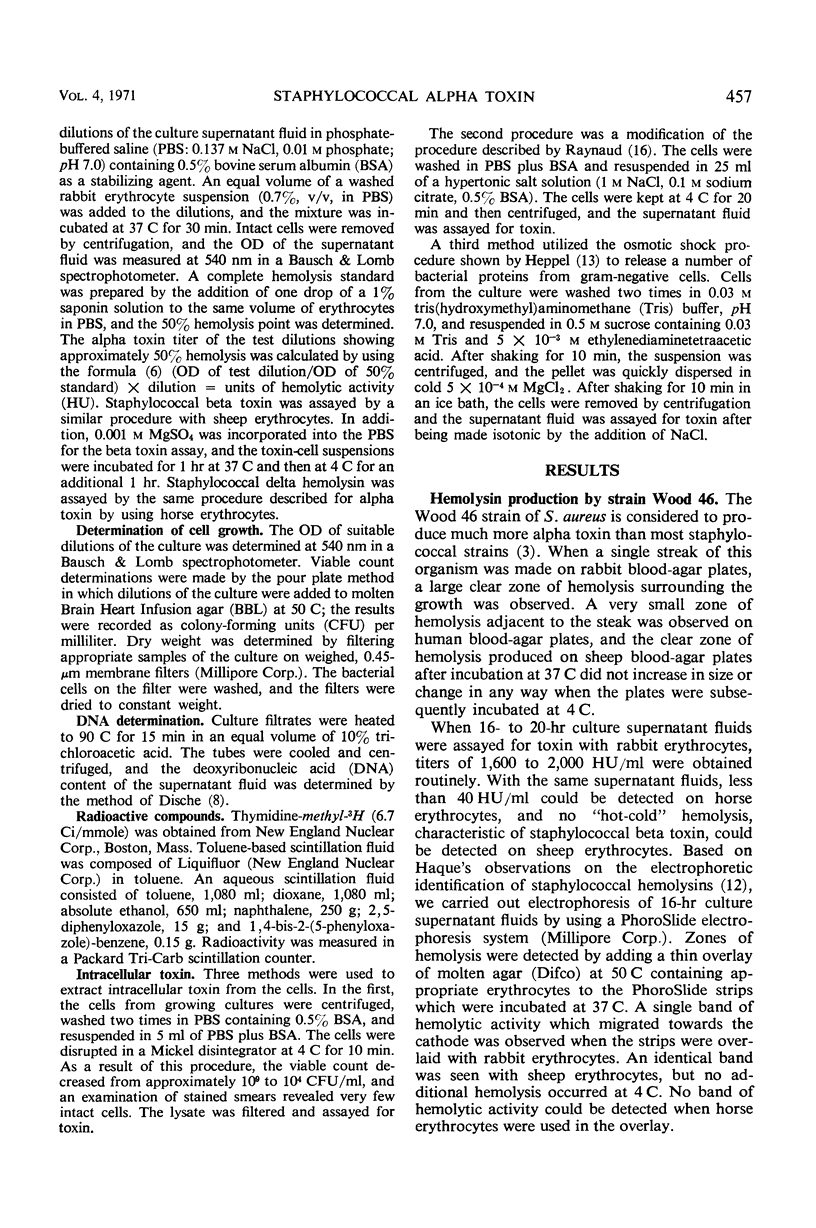
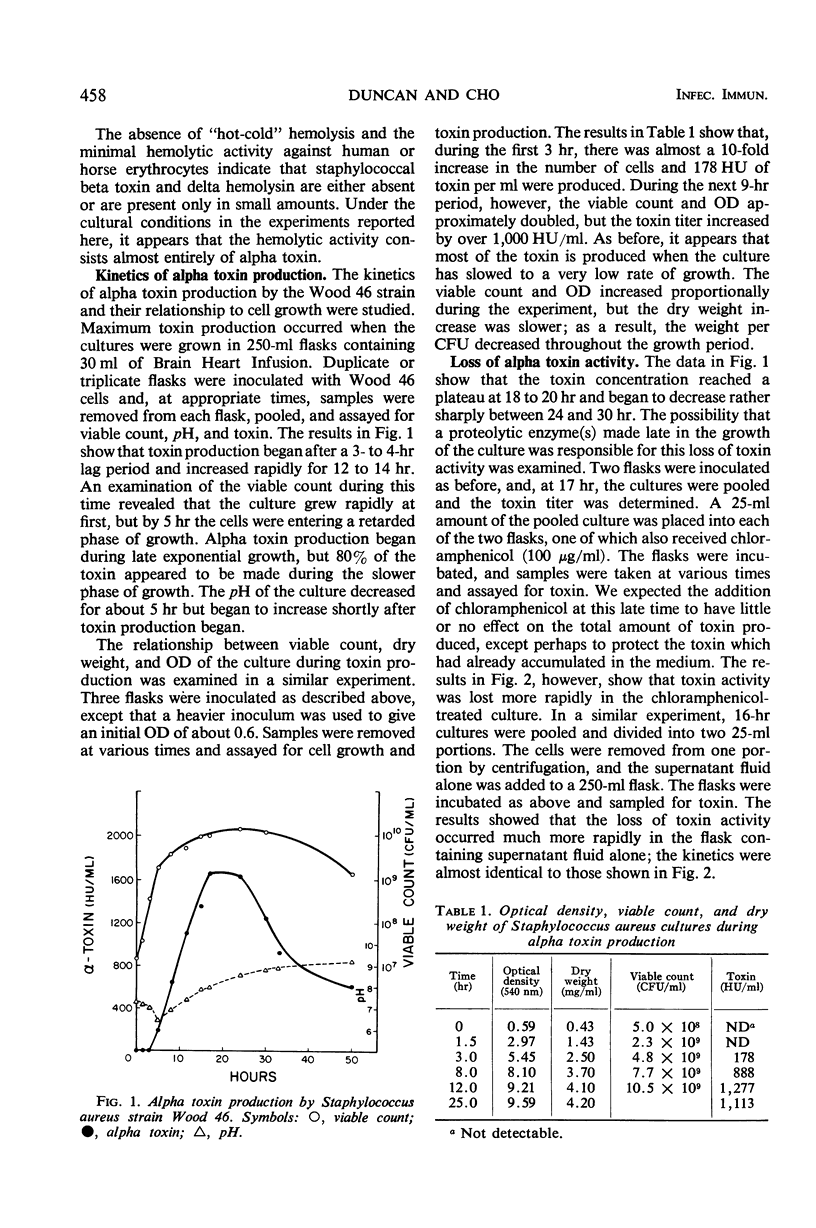
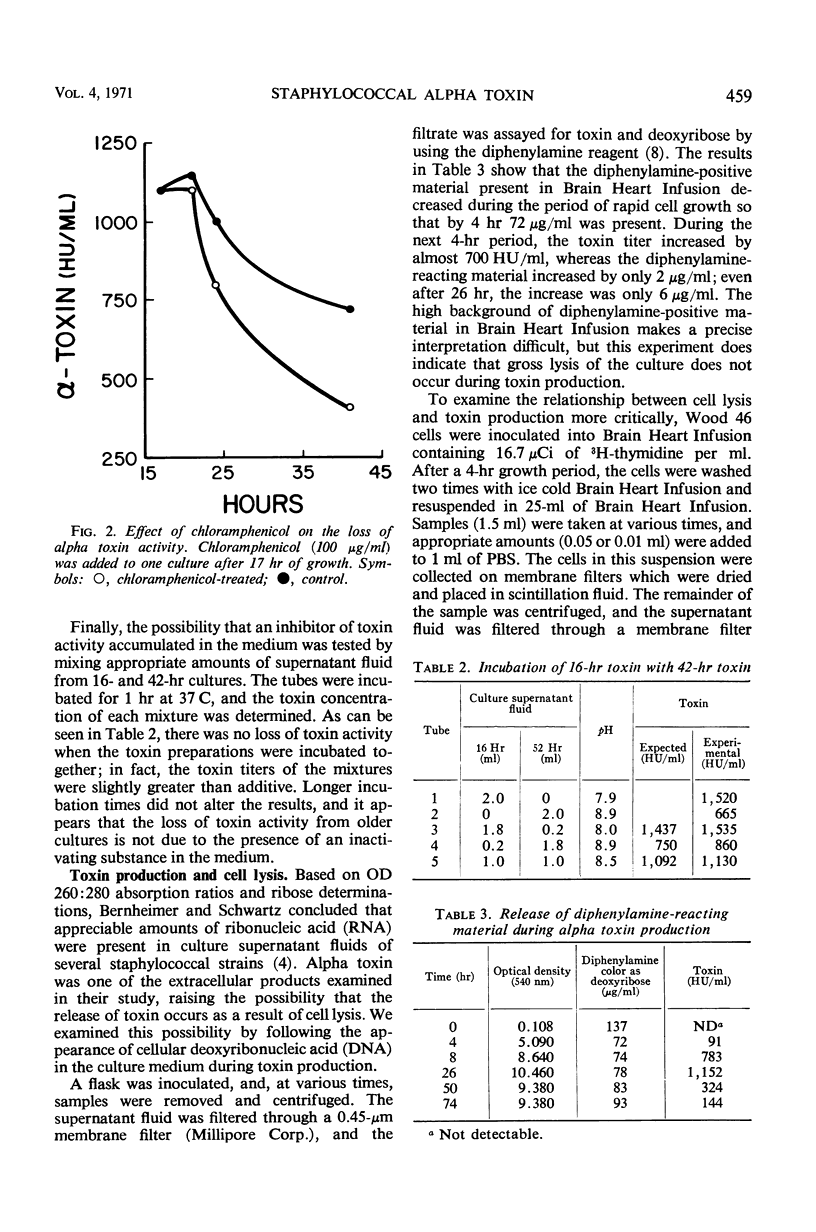
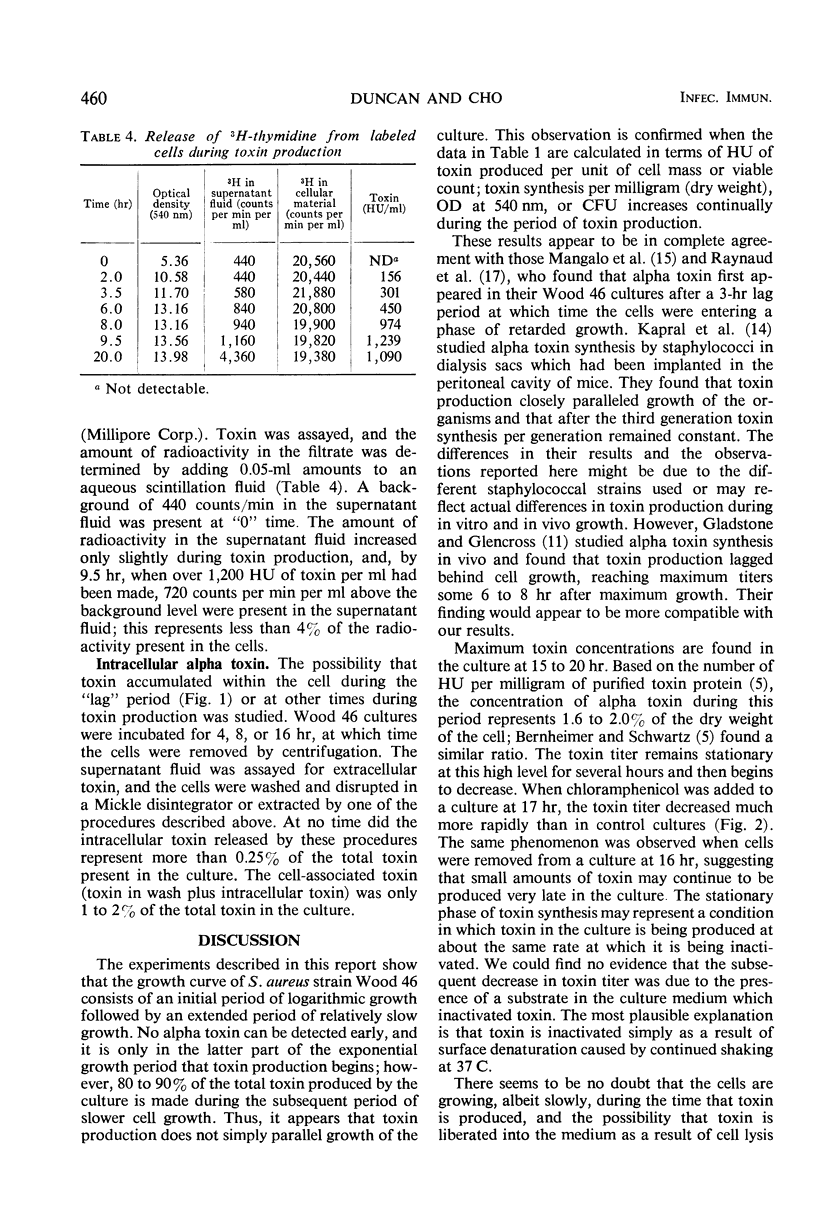
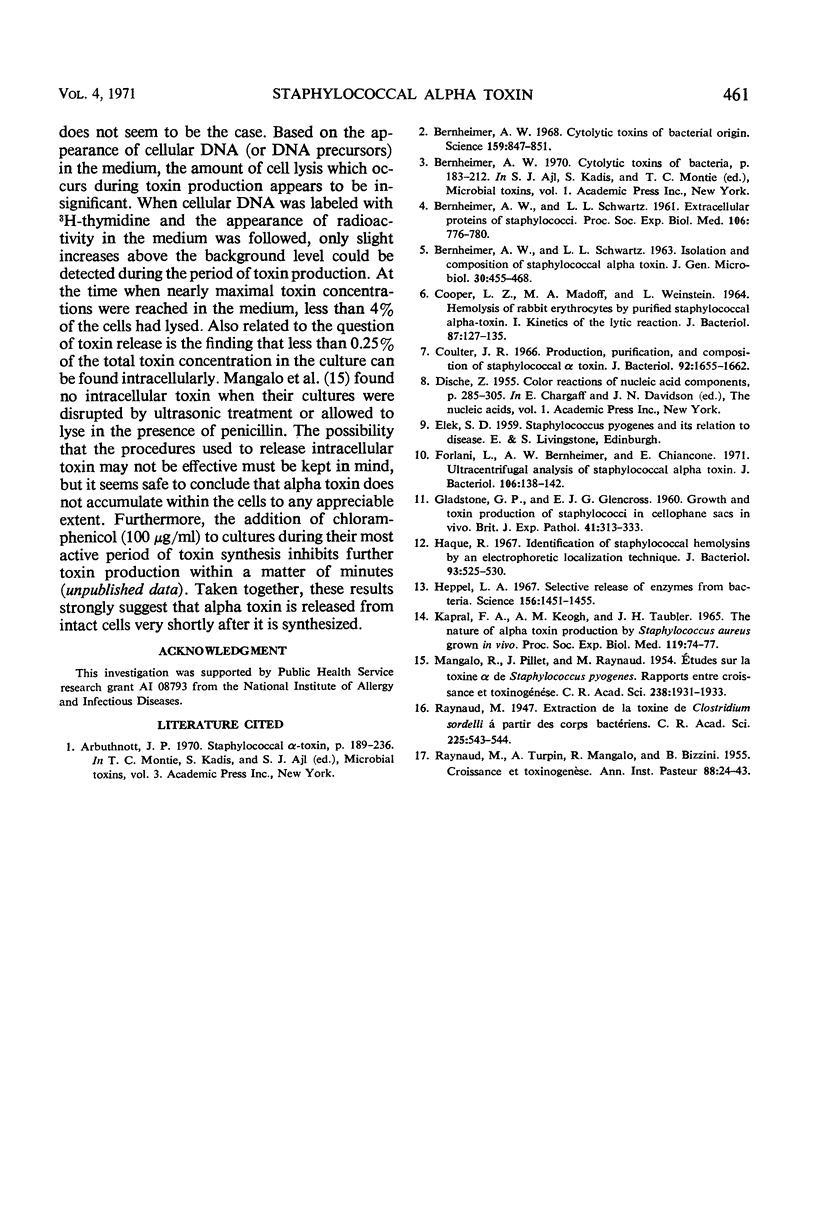
Selected References
These references are in PubMed. This may not be the complete list of references from this article.
- BERNHEIMER A. W., SCHWARTZ L. L. Isolation and composition of staphylococcal alpha toxin. J Gen Microbiol. 1963 Mar;30:455–468. doi: 10.1099/00221287-30-3-455. [DOI] [PubMed] [Google Scholar]
- Bernheimer A. W. Cytolytic toxins of bacterial origin. The nature and properties of cytolytic proteins are discussed with emphasis on staphylococcal alpha-toxin. Science. 1968 Feb 23;159(3817):847–851. doi: 10.1126/science.159.3817.847. [DOI] [PubMed] [Google Scholar]
- COOPER L. Z., MADOFF M. A., WEINSTEIN L. HEMOLYSIS OF RABBIT ERYTHROCYTES BY PURIFIED STAPHYLOCOCCAL ALPHA-TOXIN. I. KINETICS OF THE LYTIC REACTION. J Bacteriol. 1964 Jan;87:127–135. doi: 10.1128/jb.87.1.127-135.1964. [DOI] [PMC free article] [PubMed] [Google Scholar]
- Coulter J. R. Production, purification, and composition of staphylococcal alpha toxin. J Bacteriol. 1966 Dec;92(6):1655–1662. doi: 10.1128/jb.92.6.1655-1662.1966. [DOI] [PMC free article] [PubMed] [Google Scholar]
- Forlani L., Bernheimer A. W., Chiancone E. Ultracentrifugal analysis of staphylococcal alpha toxin. J Bacteriol. 1971 Apr;106(1):138–142. doi: 10.1128/jb.106.1.138-142.1971. [DOI] [PMC free article] [PubMed] [Google Scholar]
- GLADSTONE G. P., GLENCROSS E. J. Growth and toxin production of staphylococci in cellophane sacs in vivo. Br J Exp Pathol. 1960 Jun;41:313–333. [PMC free article] [PubMed] [Google Scholar]
- Haque R. U. Identification of staphylococcal hemolysins by an electrophoretic localization technique. J Bacteriol. 1967 Feb;93(2):525–530. doi: 10.1128/jb.93.2.525-530.1967. [DOI] [PMC free article] [PubMed] [Google Scholar]
- Heppel L. A. Selective release of enzymes from bacteria. Science. 1967 Jun 16;156(3781):1451–1455. doi: 10.1126/science.156.3781.1451. [DOI] [PubMed] [Google Scholar]
- KAPRAL F. A., KEOGH A. M., TAUBLER J. H. THE NATURE OF ALPHA TOXIN PRODUCTION BY STAPHYLOCOCCUS AUREUS GROWN IN VIVO. Proc Soc Exp Biol Med. 1965 May;119:74–77. doi: 10.3181/00379727-119-30102. [DOI] [PubMed] [Google Scholar]
- MANGALO R., PILLET J., RAYNAUD M. Etudes sur la toxine alpha de Staphylococcus pyogenes. Rapports entre croissance et toxinogénese. C R Hebd Seances Acad Sci. 1954 May 10;238(19):1931–1933. [PubMed] [Google Scholar]
- RAYNAUD M., TURPIN A., MANGALO R., BIZZINI B. Croissance et toxinogenèse. II. Ann Inst Pasteur (Paris) 1955 Jan;88(1):24–43. [PubMed] [Google Scholar]


